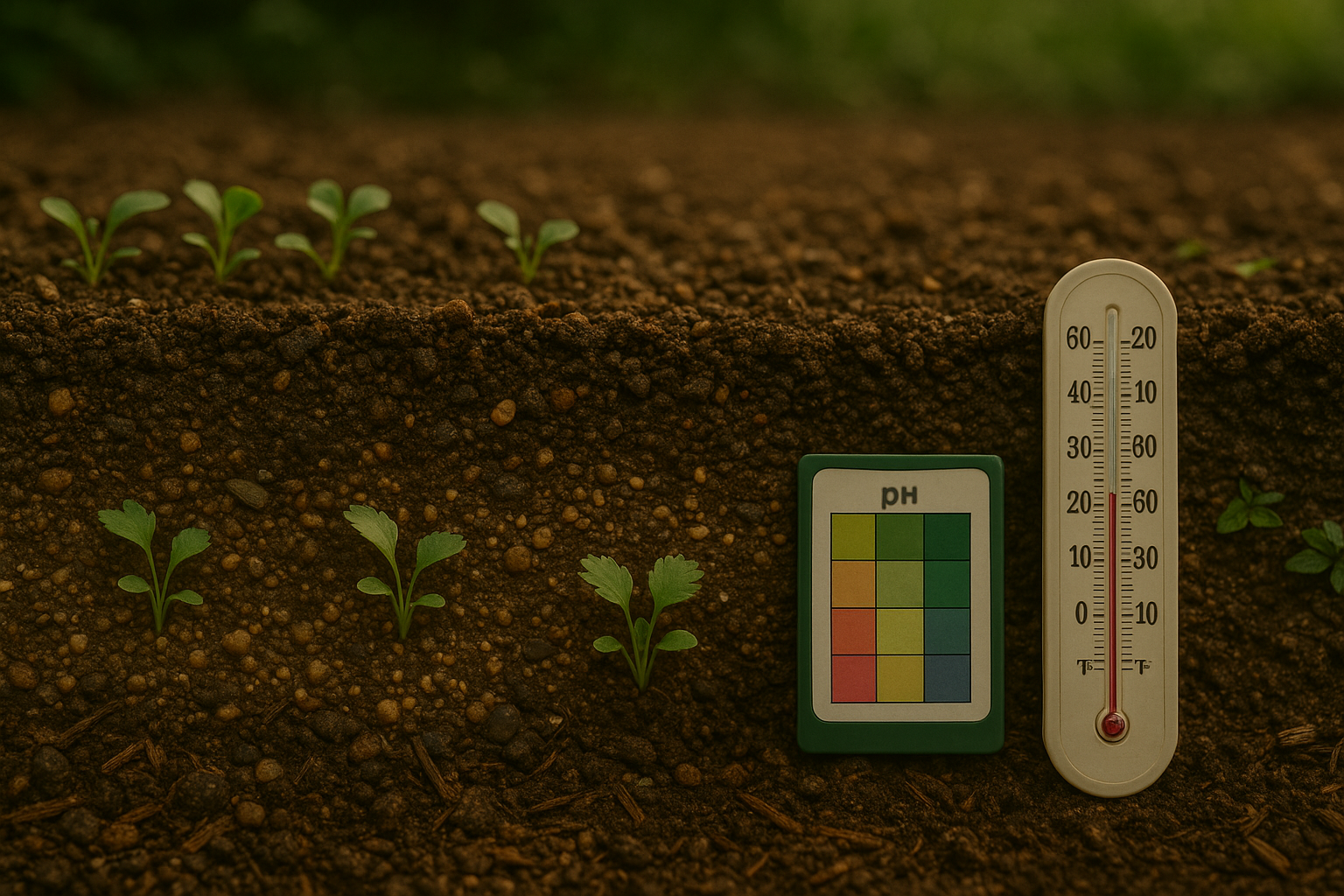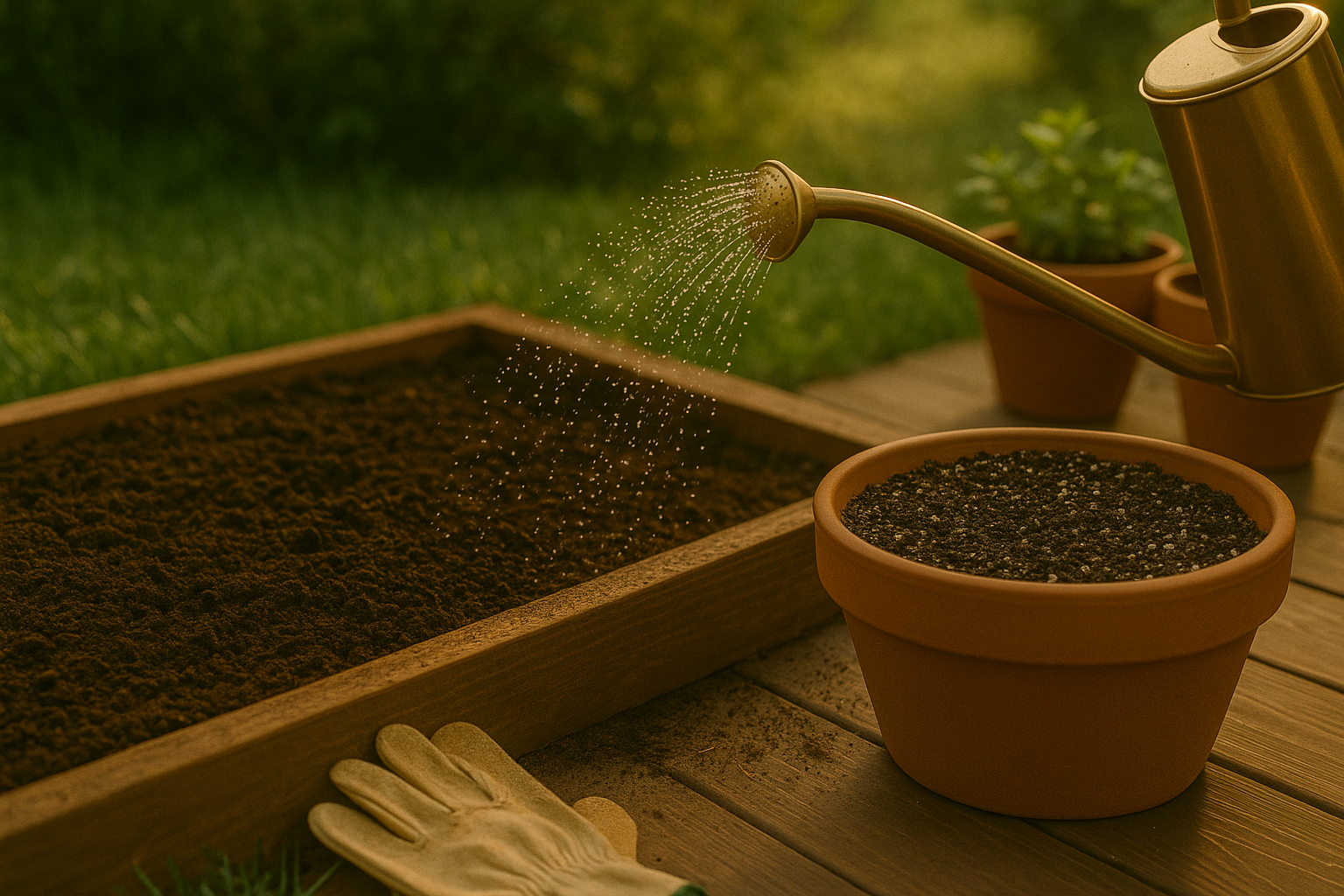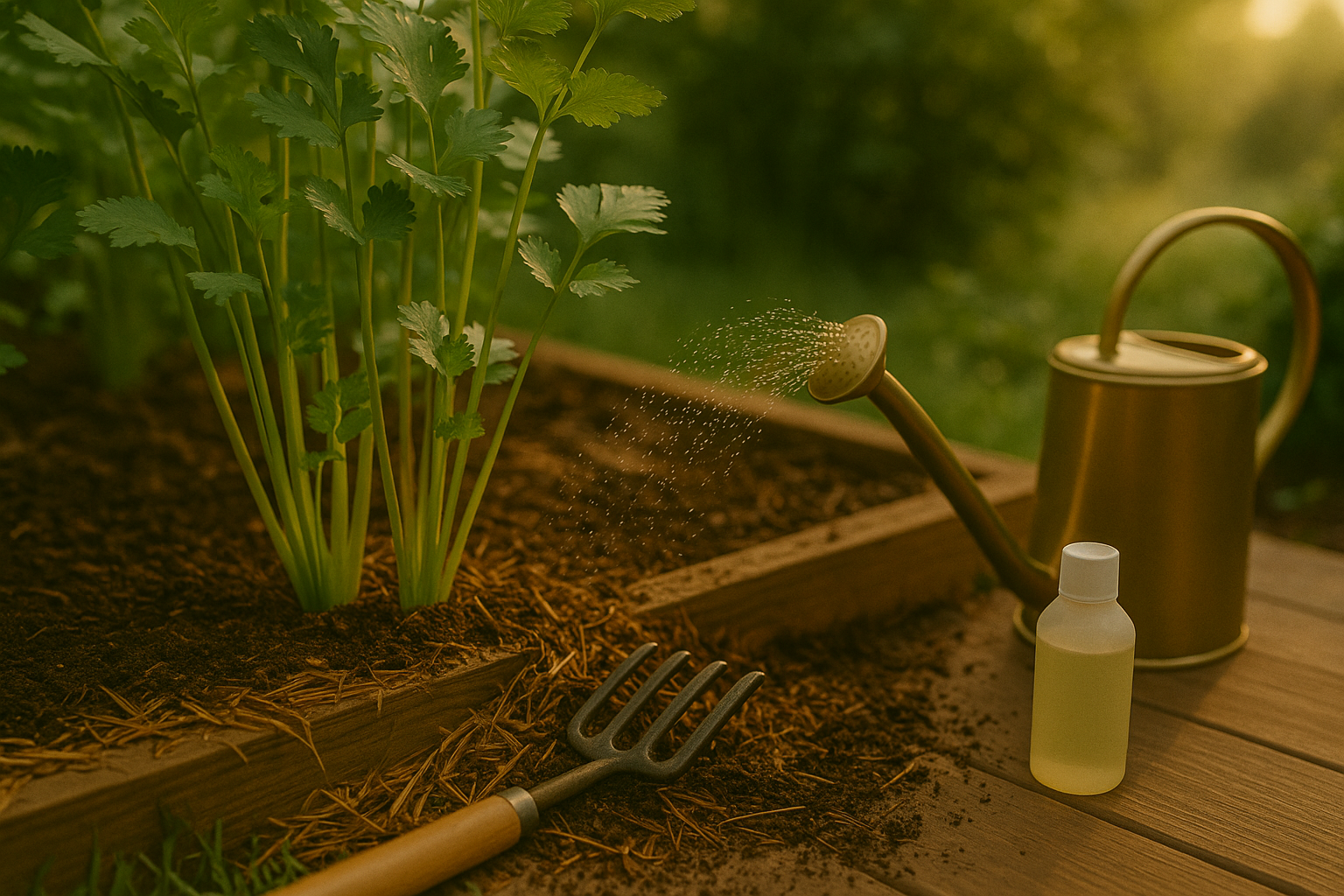Introduction to Growing Cilantro
If you’re a fan of fresh salsas, zesty curries, or homemade guacamole, chances are you’ve encountered cilantro—a vibrant and aromatic herb beloved in kitchens around the world. Whether you’re a seasoned gardener or a curious beginner, you might not realize how much cilantro’s success depends on one simple factor: the best soil for cilantro.
Getting the soil right can mean the difference between sparse, leggy plants and lush bunches bursting with flavor. The right soil does more than just hold your cilantro plants in place; it directly impacts how quickly they sprout, how robustly they grow, and even how fragrant those bright green leaves become.
Many first-time growers overlook this, discovering too late that heavy, compacted, or overly rich soil can stunt cilantro’s roots or lead to disappointing harvests. On the other hand, soil that drains well, offers light nutrients, and encourages root spread will set you up for success.
In this post, we’ll explore exactly what makes the best soil for growing cilantro—cutting through the gardening jargon to share simple tips, tested tricks, and easy-to-follow examples—so you can grow cilantro that’s thriving, flavorful, and ready for your favorite recipes.
Essential Soil Qualities for Cilantro

When growing cilantro, starting with the right soil makes all the difference. Cilantro thrives best in loose, well-draining, and loamy soil, which provides the ideal balance of moisture and air around the roots. Loam is a mix of sand, silt, and clay that feels crumbly in your hands and doesn’t clump when squeezed—meaning it won’t drown the roots but still keeps them comfortably moist.
The perfect pH range for cilantro is slightly acidic to neutral, around 6.2 to 6.8. If your soil falls outside this range, test it with an inexpensive soil kit and work in organic matter or garden lime as needed to adjust.
Cilantro’s sensitive roots hate sitting in soggy soil, so avoid heavy clay or spots in your garden where water tends to pool. Mixing in some compost or coarse sand is a practical way to improve both drainage and moisture retention, ensuring the soil stays moist but not wet.
Also, soil temperature is key—cilantro seeds germinate best when the soil is between 55°F and 70°F (13°C to 21°C). If it’s too cold, seeds may rot before sprouting; if too hot, the plants may bolt early, leading to poor leaf growth.
To give your cilantro the best start, wait to sow seeds until your garden warms in spring or choose a shaded summer spot to avoid scorching heat, always keeping the soil consistently moist, especially during germination and early growth stages.
Recommended Soil Types and Amendments

For the healthiest plants, choose loamy or sandy loam soils—they strike the perfect balance between drainage and moisture retention, making them ideal for most gardens. If your soil isn’t quite there, don’t worry! You can improve its structure and fertility by adding organic amendments like compost, aged manure, or leaf mold.
Compost is especially effective for boosting nutrients and overall soil health, while aged manure adds valuable organic matter without risking plant burn. If you’re dealing with heavy clay soil that drains slowly, mix in plenty of coarse sand alongside organic amendments to break up the density and allow water to flow. Root crops and flowers will thank you for it.
For sandy soils, which let water and nutrients pass too quickly, generous amounts of compost or well-rotted leaf mold will help hold moisture and provide a slow release of nutrients, giving your plants the staying power they need through hot, dry spells.
Before planting, work these amendments into the top 6–12 inches of soil with a rake or shovel. A soil test can also be incredibly helpful to identify pH and nutrient imbalances, so you know exactly what your garden needs.
By tailoring your soil mix with the right amendments, you’ll transform even the most challenging garden beds into productive, healthy growing spaces in no time.
Preparing Your Garden Bed or Container

To set your cilantro up for success, start by properly preparing the planting area, whether you’re working with a garden bed or a container.
For garden beds, choose a spot that gets at least 4–6 hours of sunlight each day. Begin by loosening the soil to a depth of 8–10 inches using a shovel or garden fork—this encourages healthy root growth. Test your soil with an at-home kit to check pH and nutrient levels; cilantro prefers a slightly acidic to neutral pH (6.2–6.8). If your soil is heavy or clay-like, mix in compost and a bit of sand to improve drainage and fertility. For best results, add well-rotted manure or an all-purpose organic fertilizer before planting to give your cilantro a healthy start.
When planting in containers, pick a pot at least 8 inches deep and 12 inches wide—this gives roots enough space to grow. Choose containers with drainage holes to prevent waterlogging. Fill them with a quality potting mix blended with compost, avoiding garden soil, which can compact and hinder root development. Mixing in perlite or coconut coir can boost drainage and aeration. Before placing seeds or seedlings, water the soil lightly so it’s moist but not soggy. This step-by-step prep helps prevent root rot and encourages lush, flavorful foliage.
Remember to keep containers slightly spaced apart for good air circulation, especially if you’re planting multiple pots or have a crowded balcony garden. Taking care of these details up front leads to healthier, more productive cilantro plants.
Ongoing Soil Care for Healthy Cilantro

Maintaining healthy soil throughout your cilantro’s growing season is key to a thriving, flavorful harvest. Start by applying a light layer of organic mulch, like chopped straw or shredded leaves, around the base of your plants—this helps retain soil moisture, keeps roots cool, and slows weed growth.
Every few weeks, support growth with a diluted liquid fertilizer or compost tea, but go easy; cilantro is sensitive to over-fertilization, which can cause leggy plants. Aim to water deeply once or twice a week, letting the top inch of soil dry out between waterings. Too much water leads to soggy roots, while too little causes the plant to bolt.
Watch for yellowing leaves, a sign your soil could be missing nutrients or retaining too much water. Remedy this by reducing watering, improving drainage, or adding a top dressing of compost. If you notice a sour smell or consistently damp soil, pull back on watering and aerate the soil gently with a fork to help it dry.
Being proactive and observant with your cilantro’s soil keeps your plants healthy and your dishes flavorful all season long.
Common Soil-Related Problems and How to Fix Them
Cilantro can struggle if your soil isn’t quite right, so it’s important to watch for common issues like poor drainage and nutrient deficiencies. If your soil often feels soggy or water pools after rain, it likely has poor drainage. You can improve this by mixing in coarse sand or perlite, which helps water move through the soil more easily.
Nutrient deficiencies, especially a lack of nitrogen, can cause cilantro leaves to look pale and stunted. To fix this, work well-rotted compost or organic matter into the soil before planting, and consider using a balanced organic fertilizer every few weeks.
Cilantro is also sensitive to soil-borne diseases like damping-off, which thrive in wet, compacted soils. To prevent these, always plant cilantro in well-drained beds, avoid overhead watering, and rotate your planting location each season. Lightly mulching with straw or dried leaves can help keep moisture levels steady and discourage fungal growth.
Finally, remove any yellowing or sick plants quickly to stop diseases from spreading, and always use clean tools. These simple steps can make a big difference in growing a healthy, abundant cilantro crop.
